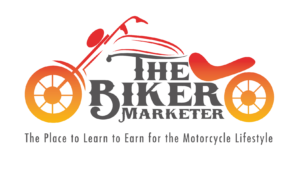Finding the Right Affiliate Programs in the Biker Niche
Research Your Options
When I first dipped my toes into affiliate marketing, I spent a mountain of time figuring out which programs float my boat. It’s all about finding the right fit for your audience. There are tons of options out there—from motorcycle gear and accessories to insurance and tours. Knowing your niche well is key to narrowing down those choices.
Start by exploring various affiliate networks that specialize in biking. Some of my favorites include Amazon’s affiliate program, RevZilla, and Cycle Gear. Each of these programs provides great commission rates and has well-known brands that bikers trust. Dive into the reviews and ratings of their products too to ensure quality.
Getting insights from communities like biker forums or social media groups can lead you to hidden gems. I’ve often found some lesser-known but super effective affiliate programs shared by fellow bikers. Don’t be shy; ask around—biking folks are usually friendly and willing to help!
Understand the Commission Structures
Once you’ve found potential programs, it’s vital to break down their commission structures. Some programs offer a flat rate per sale, while others give you a percentage based on the product price. Understanding these nuances helps you strategize better.
For instance, a program might offer a 10% commission on a $500 bike part—so that’s a cool $50 in your pocket! Compare that to a $20 item with a 50% commission; while the percentage sounds good, the actual payout is way less. You’ve gotta do the math to find what works best for your audience and content strategy.
Remember also to look at the cookie duration. A longer cookie duration can be a game-changer. The longer they have to buy after clicking your link, the higher your chances of sales!
Align Products with Your Content
When it comes to affiliate marketing, relevancy is everything! Consider what your audience genuinely wants and needs—this will ensure they actually click through and buy. For example, if you’re reviewing motorcycle helmets, pushing a random unrelated gadget isn’t going to cut it.
In my experience, creating content that seamlessly integrates affiliate products feels more natural and boosts trust. Think about writing gear reviews, how-to articles, or round-ups showcasing the best accessories. This not only helps potential buyers but also sets you up as an authority in the biker community.
Creating lists—like “Top 5 Must-Have Accessories for New Bikers”—can be a useful format. Guides and tutorials work wonders too! I’ve seen my conversion rates soar when I match my recommendations directly with my audience’s problems or interests.
Building an Engaging Platform
Selecting the Right Blogging Platform
When I started, I had to decide where to host my content. Platforms like WordPress, Wix, or Squarespace each have their pros and cons. WordPress has been my go-to because of its customizability and a plethora of plugins to track affiliate performance.
Choosing your blogging platform also depends on your technical skills. If you’re not much of a techie, a drag-and-drop builder might suit you better. Either way, make sure it supports mobile optimization since bikers are always on the go and likely to browse on their phones!
Don’t overlook your site’s loading speed either—sluggish pages can lead to high bounce rates. Use tools like GTmetrix to test and enhance your site performance.
Creating Quality Content
Quality content, my friends, is the backbone of your affiliate marketing success. I always focus on writing genuinely informative and entertaining posts. The ideal length for a blog post ranges between 1,500 to 2,500 words, which gives you enough space to provide valuable insights without overwhelming the reader.
Incorporate various media, like photos and videos of the products you’re promoting. I love using real-life examples from my riding experiences; it helps form a connection with my readers, and they appreciate the authenticity.
Lastly, don’t forget to proofread! Grammatical errors can drive readers away, making you appear less professional. Tools like Grammarly can help catch those pesky typos before you hit publish.
Promoting Your Content
Writing great content isn’t enough—it needs to be seen! I leverage social media to amplify my presence. Platforms like Instagram and Facebook are fantastic for connecting with fellow bikers while showcasing your blog’s latest posts. Plus, biker groups can be goldmines for sharing your content organically within a relevant audience.

Email marketing is another powerful tool. I regularly send out newsletters featuring my latest posts along with exclusive offers. You can easily grow your email list by offering a freebie—like a downloadable guide on biking essentials in return for an email signup!
Lastly, consider collaborations with fellow bloggers or social media influencers in your niche. Guest posting can help you tap into their audience, while joint promotions can boost visibility for both parties. Networking is vital, so get out there and make connections!
Tracking and Analyzing Performance
Setting Up the Right Tools
You’ve done all the groundwork, and now it’s time to measure success! Setting up analytics software is essential to understanding your audience’s behavior. Google Analytics is my lifesaver for tracking user interactions and monitoring which pages drive the most revenue.
Utilizing affiliate tracking tools is also key. Most affiliate programs provide dashboards to track clicks, conversions, and earnings. Spend some time getting familiar with these tools; the data can offer valuable insights to help refine your strategy.
If you’re serious about scaling, consider investing in more advanced analytics tools. Programs like SEMrush can help you analyze traffic sources and optimize your content accordingly. Knowledge is power, baby!
Adjusting Your Strategy Based on Data
Gathering data is just the first step; the real work starts when you dive deep into it. Look for patterns—are there certain products or types of content that earn more than others? In my experience, I’ve noticed that seasonal content can lead to higher engagement and conversions during specific times of the year.
Don’t be afraid to pivot your strategy based on what the data is telling you. If one post isn’t bringing in clicks, experiment with your headlines, images, or call-to-action buttons. Gradually over time, you’ll gain a better understanding of what your audience craves.
Remember, affiliate marketing is a long game. So while it’s tempting to chase short-term gains, focusing on sustainable strategies will yield much greater rewards in the long run.
Staying Updated with Industry Trends
The biking world is ever-evolving, and staying updated is crucial. I make it a habit to read biking magazines, follow popular biking influencers on social media, and listen to biking podcasts. Keeping my finger on the pulse helps me understand emerging trends and shifts in consumer preferences.
Joining biker communities online and attending events can also provide insights into what products and services are gaining traction. Your audience will appreciate it too when you bring fresh, relevant content that hits the mark!
Ultimately, don’t let complacency sneak in! Regularly revisiting and refreshing your strategies will keep you competitive and maintain your audience’s interest.
FAQ
1. What is affiliate marketing in the biker niche?
Affiliate marketing in the biker niche involves promoting products relevant to bikers while earning commissions for sales generated through your referral links. It could range from gear to bike parts, tours, and training programs.
2. How do I choose the right affiliate programs?
Research different affiliate networks, align the products with your audience’s needs, and understand their commission structures to ensure they fit your content and goals.
3. What type of content works best for promoting affiliate products?
Informative product reviews, how-to guides, and top lists resonate well with the biking community. Authentic and relatable content builds trust and encourages purchases.
4. How do I drive traffic to my affiliate content?
Use social media, email marketing, and collaborations with other bloggers to promote your content. Engaging in biker groups also helps extend your reach.
5. How can I track my affiliate marketing performance?
Utilize tools like Google Analytics to monitor website traffic, along with the built-in dashboards of your affiliate programs to track clicks and conversions. Gather data regularly to adjust your strategy accordingly.


